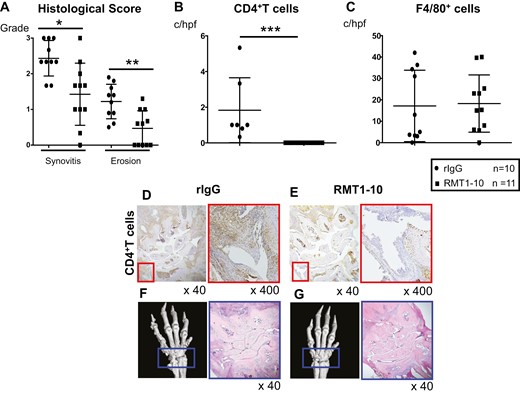-
Views
-
Cite
Cite
Yuji Nozaki, Hisaya Akiba, Hiroki Akazawa, Hirotaka Yamazawa, Kaori Ishimura, Koji Kinoshita, Itaru Matsumura, Inhibition of the TIM-1 and -3 signaling pathway ameliorates disease in a murine model of rheumatoid arthritis, Clinical and Experimental Immunology, Volume 218, Issue 1, October 2024, Pages 55–64, https://doi.org/10.1093/cei/uxae056
Close - Share Icon Share
Abstract
Members of the T-cell immunoglobulin and mucin (TIM) family, which is crucial for T-cell function, are implicated in autoimmunity. TIM-1 and -3 play distinct roles in autoimmunity, with TIM-1 acting as a costimulatory molecule and TIM-3 regulating Th1 responses. We investigated the therapeutic potential of anti-TIM-1 (RMT1-10) and anti-TIM-3 (RMT3-23) antibodies in an autoimmune arthritis model. Zymosan A was used to induce arthritis in female SKG mice. The arthritis scores, histology, mRNA expression, cytokine levels, micro-computed tomography, and flow cytometry results were obtained. The application of RMT1-10 reduced the arthritis scores, histological damage, and CD4+ T-cell infiltrations, and it suppressed interleukin (IL)-6 and -17A and reduced TIM-3 mRNA expressions. RMT3-23 also lowered arthritis severity, improved histology, and reduced serum levels of tumor necrosis factor (TNF)-α and IL-17A. RMT3-23 inhibited intracellular TNF-α and IL-6 and early apoptosis. An amelioration of autoimmune arthritis was achieved by blocking the TIM-1 and -3 signaling pathways via RMT1-10 and RMT3-23 administration, leading to a widespread decrease in inflammatory cytokines. Both antibodies exhibited therapeutic effects, suggesting TIM-1 and -3 as potential targets for rheumatoid arthritis.






